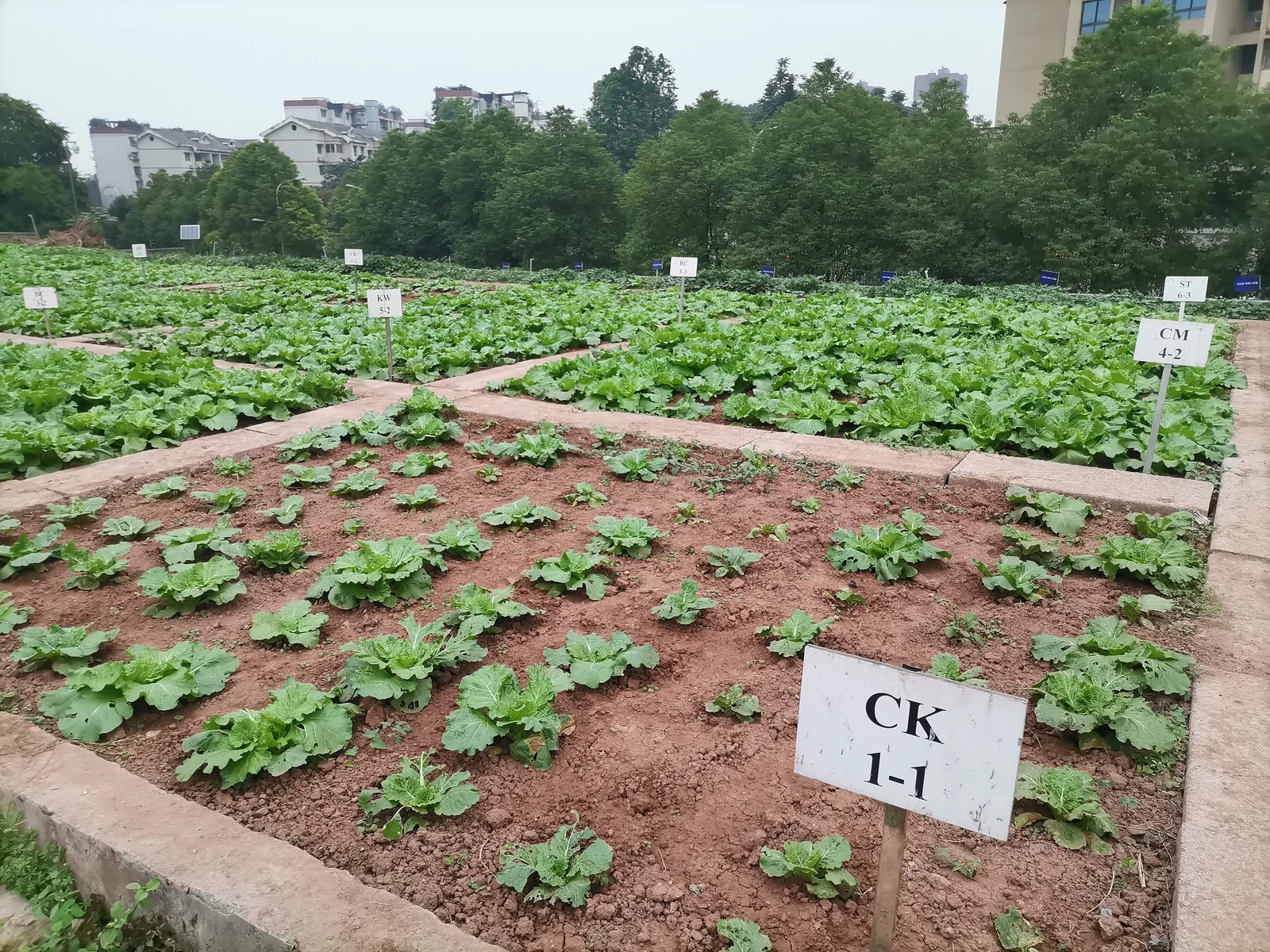Chongqing
Description
This NBS site is funded by Ministry of Science and Technology of China.
A field experiment was conducted at the National Purple Soil Fertility and Fertilizer Effectiveness Monitoring Station (29°48′45″N, 106°24′31″E) in Beibei District, Chongqing, China. The annual precipitation is approximately 1161 mm and the average temperature is around 18.3°C.
According to the Chinese soil system classification, the soil is classified as purple soil, which is composed of 88% sand, 5% silt, and 7% clay. The cropping system follows a chili-cabbage rotation, with chili peppers (Capsicum annuum L.) planted from April to August, and cabbages (Brassica rapa var. glabra Regel) planted from October to January of the following year.
The initial topsoil (0 - 20 cm) physicochemical properties were as follows: 4.69 g kg-1 organic carbon, 0.37 g kg-1 total nitrogen, 14.1 mg kg-1 available phosphorus, 221 mg kg-1 available potassium, and a pH of 8.44.
Challenges
Excessive chemical nitrogen inputs is a big problem for agriculture in developing countries. As an example, the farmer generally applied a lot of synthetic fertilizer, but these fertilizer cannot be completely absorbed by crops, leading to pressing environmental risks, such as greenhouse gas emission and diffuse pollution. On the other hand, The southwest regions have a high number of livestock, for example, the pig load is 33% higher above national average in China. The excrement from livestock possesses a lot of nutrients, including nitrogen and phosphorus, etc.
Accordingly, we propose a plan about the partial organic substitution in total fertilizer to pursue the sustainable agriculture. The purposes of this project are to reveal the mechanism for high nutrient use efficiency on the basis of partial organic substitution in local regions; and to set up a sound system for high nutrient use efficiency for maize production and vegetable production in southwest regions.
trans4num NBS test site
The experiment consisted six treatments:
- (1) control, without nutrient addition (CK);
- (2) farmers' customary fertilizer treatment (CONV);
- (3) biochar addition (BC);
- (4) chicken manure addition (CM);
- (5) carbon-based material derived from kitchen waste (KW); and
- (6) straw returning (ST).
There are three replicates for each treatment, and each plot is 15.75 m2 (4.5 m long and 3.5 m wide). The nitrogen, phosphorus, and potassium fertilizers in CONV were 450 kg N ha-1, 450 kg P2O5 ha-1, and 300 kg K2O ha-1, respectively. The amount of carbon, nitrogen, and phosphorus was 1700 kg C ha-1, 250 kg N ha-1, and 160 kg P2O5 ha-1 for BC, CM, KW, and ST. Fertilizers were applied twice a year, before transplanting the crop in each season.
Multimedia products
Poster: Chongqing NBS site Augumenting the stability of soil aggregate carbon with nutrient management in worldwide croplands Can high-yielding maize system decrease greenhouse gas emissions largely while simultaneously enhancing economic and ecosystem benefits through the 'rhizobiont' concept? Co-benefits for net carbon emissions and rice yields through improved management of organic nitrogen and water Nature-based nutrient management through returning agricultural organic waste enhances soil aggregate organic carbon stability

